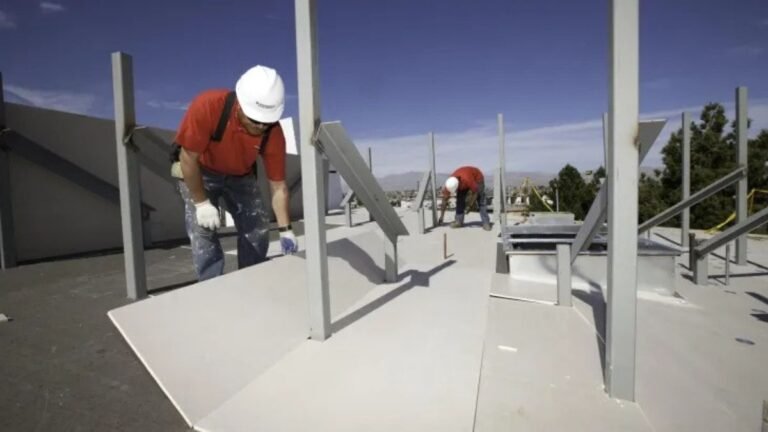Table of Contents
Key Takeaways:
- Discover various innovative insulation solutions for improved home energy efficiency.
- Understand the environmental and economic benefits of efficient insulation.
- Learn important factors to consider when choosing insulation materials.
Creating a comfortable and energy-efficient home begins with addressing insulation needs effectively. With the growing concern over energy costs and environmental footprints, homeowners increasingly turn to novel insulation methods. Understanding these innovative materials and methods can also help maintain a precise balance between energy usage and environmental care.
Why Insulation Matters
Insulation is the unsung hero in a home’s energy management regime. It drastically minimizes the demand for HVAC systems by curbing the escape of heated or cooled air, slashing electricity bills, and extending the lifespan of the equipment. Effective insulation translates into year-round comfort for households across different climate zones, stabilizing indoor temperatures to combat chilly winters or scorching summers. As a bonus, well-insulated homes often experience less noise pollution from the outside, making the indoors serene and pleasant.
Innovative Insulation Materials
The science of insulation has made significant strides, offering materials like aerogel, vacuum insulation panels, and sheep wool. These solutions promise substantial energy savings and reduced environmental impact, catering to areas with diverse climates, such as attic insulation Seattle. These products provide excellent thermal protection, each with its unique advantages.
Aerogel
Aerogel, often called frozen smoke, excels in thermal conductivity due to its ultra-light and porous structure. Though traditionally used in aerospace applications, its transition to home insulation signifies its high-performance capabilities. According to the Department of Energy, aerogel insulation can dramatically reduce heat loss, which is particularly beneficial for tight spaces requiring minimal thickness.
Vacuum Insulation Panels
Vacuum insulation panels’ efficiency hinges on using a vacuum to impede thermal bridges. These panels are incredible where space is scarce or in retrofitting older homes with conservation constraints. Despite being slightly brittle, their exceptional thermal resistance makes them one of the most effective insulative materials currently available.
Sheep Wool
Sheep wool offers a natural alternative that is both sustainable and effective. It can absorb and release moisture without diminishing its thermal properties, maintaining a healthy indoor climate. This renewable resource can also help purify the air, absorb harmful chemicals, and make a safe and environmentally friendly dual-purpose insulator.
The Environmental Impact
Incorporating modern insulation solutions can play a decisive role in environmental conservation. By lowering energy consumption, homes significantly reduce their carbon footprint. This is particularly crucial in the global effort to mitigate climate change. According to ScienceDaily, improved insulation is an easy and effective step for homeowners to contribute positively towards a sustainable future.
Cost-Effectiveness
While initial costs for some innovative insulation materials like aerogel can be steeper than those of traditional counterparts, long-term savings and energy bill reductions often offset the investment over time. Additionally, numerous programs offer tax credits, rebates, or incentives for adopting energy-efficient upgrades, further enhancing the attractiveness of these advanced materials. Awareness and thorough investigation of such incentives can make a substantial financial difference, encouraging higher adoption rates.
DIY vs. Professional Installation
For the handy homeowner, taking on insulation projects can seem like a cost-saving venture. However, the precision required for materials such as vacuum panels demands professional expertise to realize their benefits entirely. More than incorrect installation can lead to thermal leaks and reduced efficiency, nullifying these sophisticated materials’ advantages. Professional installers have the know-how to ensure seals remain unbroken and flawless fitment, guaranteeing maximal effectiveness.
Factors to Consider
When selecting insulation, various factors, including climate conditions, budgetary restrictions, and the home’s architectural design, must be considered. The R-value, a commonly used metric to indicate insulating efficiency, should align with the climatic demands of the local area. Regions with extremely cold or hot climates might require higher R-value insulation materials to maintain energy efficiency. This strategic approach ensures comfort and translates into economic savings throughout the year.
Innovative insulation solutions offer far-reaching benefits in energy savings, environmental impact, and enhanced living conditions. By assessing and upgrading insulation, homeowners can make strides toward efficient energy use, embrace sustainability, and enjoy the fruits of their investment in the form of low energy bills and a comfortable indoor environment.

